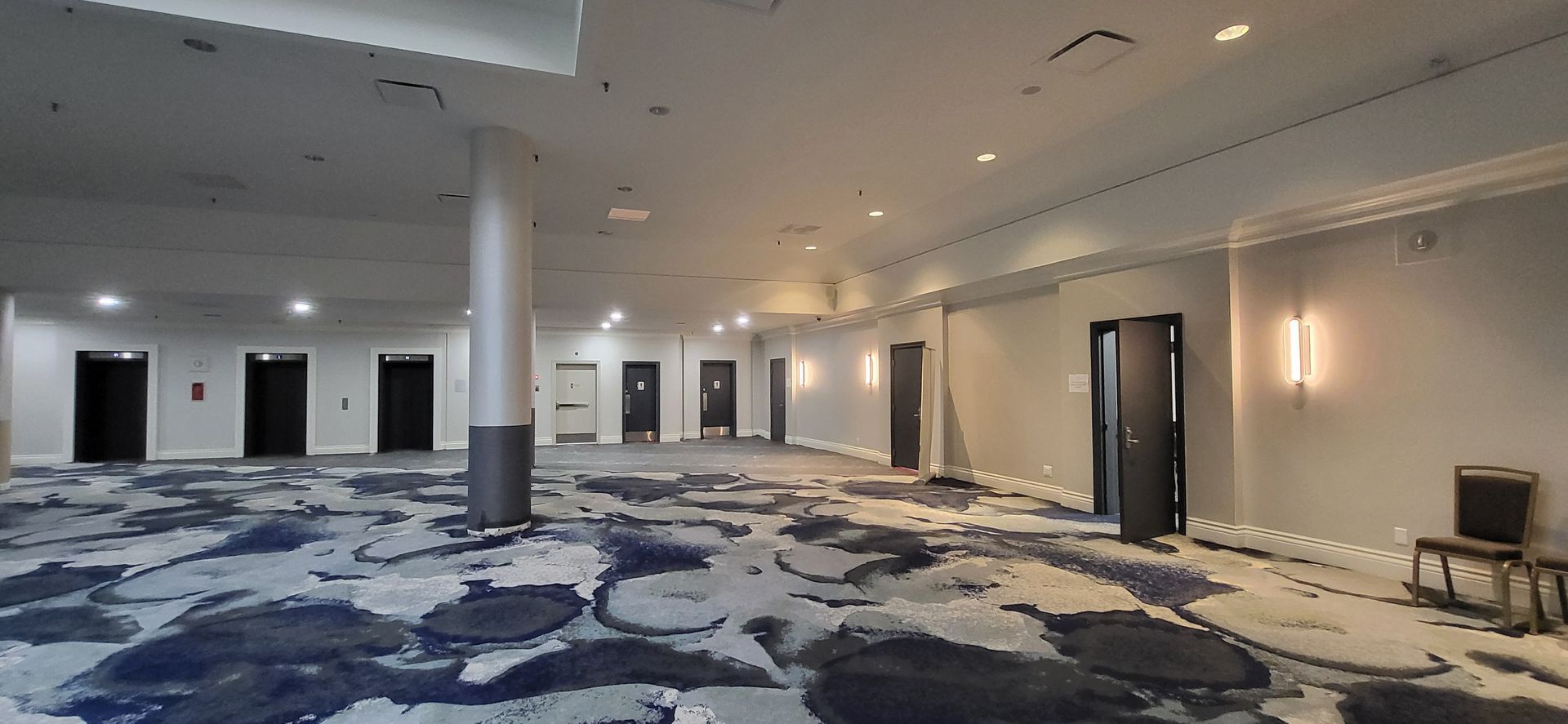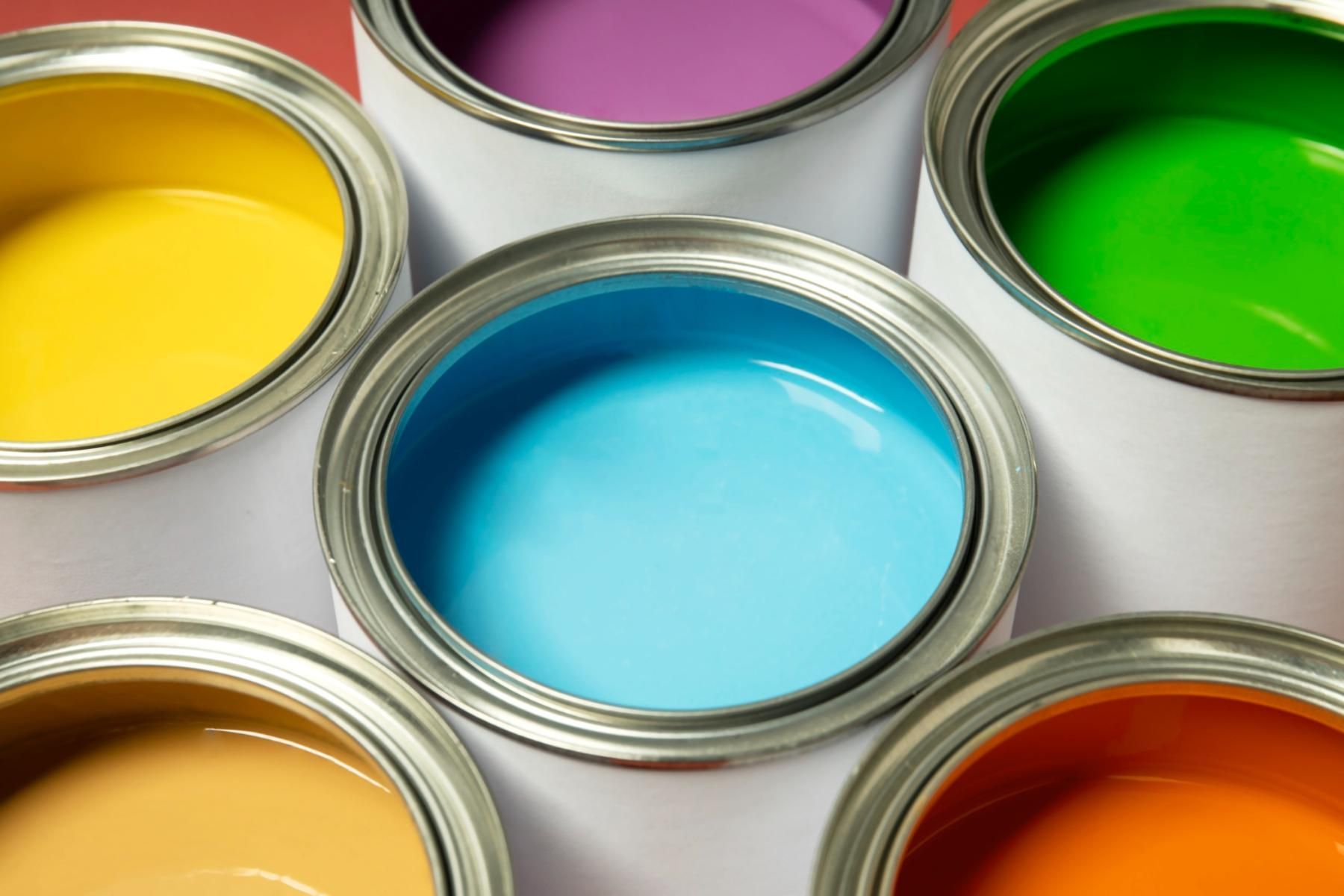By Revive Painting
•
December 7, 2025
Understanding the most important differences between acrylic and latex paint helps you make better decisions about painting your home. These paint types serve similar purposes, but their makeup affects how durable they are, how you apply them, and their final look. Learn about the best paint brands for your home . What is latex paint made of? Modern latex paint doesn't contain any natural rubber. The paint combines four key ingredients to create an emulsion. You'll find resins that act as binders, titanium dioxide for pigment, limestone as an extender, and water that works as a thinner. Today's latex paints use synthetic polymers—usually styrene-acrylic or vinyl-acrylic binders—instead of natural materials. Natural resins make up only 10% of latex paint, and synthetic materials account for the other 90%. The paint creates a protective polymer film as the water evaporates. This shield adds color and protection to your surfaces. The water-based formula makes latex paint eco-friendly with lower VOC levels than oil-based options. On top of that, it cleans up easily with soap and water, which makes it perfect to use in DIY projects. How acrylic paint is different in composition Acrylic paint has some things in common with latex paint but its formula is quite different. The standout feature of acrylic paint is its pure 100% acrylic resin without any cuts or dilution. The paint includes extra chemicals like plasticizers, silicone oils, and defoamers that you won't find in latex paints. Acrylic paint creates a tougher and more flexible film even though it's water-based. The chemicals in acrylic paint let it stretch and shrink better as temperatures change. This quality makes it a top choice for outdoor painting. The paint becomes water-resistant after it dries but stays flexible. These features make it great for surfaces that face moisture and weather changes. Common misconceptions about latex vs acrylic paint People often get confused about these paints because of some common myths: Acrylic paint is oil-based : Many people think acrylic paint is oil-based, but it's actually water-based. This mix-up happens because some people link "acrylic" with oil-based formulas. Latex contains natural rubber : The name might fool you, but modern latex paint has no natural rubber latex in it. They are completely different : Both types of paint use acrylic polymers as binders—the real difference lies in how much they use and what else goes into the mix. All exterior paint must be acrylic : Acrylic works great outdoors, but some brands now offer outdoor latex paint loaded with extra acrylic resin. These differences can help you pick the right paint that works best for your project and surface needs. Key Differences Between Latex and Acrylic Paint You need to understand the basic differences between acrylic and latex paint to make the right choice. Both types have their own strengths that work better for different projects and conditions. Drying time and workability Latex paint dries quickly - you can touch it after just one to two hours and add another coat the same day if conditions are right. Acrylic paint takes longer, needing four to six hours between coats because of its thicker resin. Both paints take 14 to 30 days to cure fully. The quick-drying latex works great for big indoor projects where time matters. Acrylic's slower drying time lets you work longer on detailed painting tasks. Durability and resistance to wear Acrylic paint lasts longer than latex. You can expect it to last anywhere from two to 15 years while latex typically holds up for two to 10 years. Dry acrylic paint resists water, mold, and UV rays better. The paint's chemical makeup creates a tough yet flexible finish that stands up to harsh weather - perfect for outdoor surfaces. Latex paint works well indoors but chips and peels more easily, especially in damp areas. VOC levels and environmental impact Latex paint has fewer volatile organic compounds (VOCs) than acrylic. This makes latex a safer choice for indoor spaces, especially rooms with poor airflow or where kids and pets spend time. Safe paints should have VOC levels under 50 g/L, though sensitive people should look for levels below 10 g/L. While acrylic has more VOCs, its durability means you won't paint as often. Finish quality and color retention Acrylic paint keeps its vibrant colors longer and looks better under direct sunlight. UV-resistant properties help prevent the fading that often happens with latex paint. Acrylic creates smoother finishes that hide brush strokes better, though it takes more skill to apply. Latex paint goes on easier but shows more brush marks because it dries so quickly. Elasticity and surface flexibility Acrylic paint can stretch and shrink with temperature changes without cracking or peeling. This makes it ideal for exterior wood and places with changing weather like Saskatoon. Latex offers some flexibility but can't match acrylic's adaptability. This often leads to early failure on surfaces that expand and contract. That's why acrylic remains the top choice for outdoor projects or areas with big temperature swings. Choosing the Right Paint for Your Surface Picking the right paint for each surface in your home will give you the best grip, life span, and looks. Acrylic and latex paints each work better in different places, based on the environment and what the surface needs. Acrylic vs latex paint for interior walls Both paint types work great on interior walls - your choice depends on the room's use and your budget. Latex paint is perfect for low-traffic areas like guest bedrooms and formal living spaces since these rooms don't need the extra durability that costlier acrylics provide. But acrylic paint stands out as the better choice for busy areas like hallways and family rooms where walls get touched and scuffed often. Pure acrylic resins bond more strongly to create a tougher finish that won't peel or detach easily over time. When to use latex paint on ceilings and drywall Latex formulations work great on ceilings and drywall, especially when you have specific needs. Ceiling-specific latex paints have a super-flat finish that cuts down light reflections and hides small surface flaws, creating a smooth, even look. Latex paint's flexibility lets it stretch without cracking on drywall that moves slightly with temperature changes. Many ceiling paints can self-prime and look great with fewer coats than regular paints - perfect if you're watching your budget. Best surfaces for acrylic paint Acrylic paint really shines on exterior surfaces, aluminum siding, and areas that get wet often. Once it dries, its excellent water resistance makes it the best choice for bathrooms, kitchens, and laundry rooms where humidity runs high. Pure acrylic paint also gives unmatched toughness outdoors - it handles sun, rain, and temperature swings without fading, cracking, or peeling. It also expands and contracts naturally, making it perfect for garages, sheds, and poorly insulated spaces that see big temperature changes. How surface prep affects paint performance Proper surface preparation determines how long your paint will last, whatever type you choose. About 80% of coating failures happen because surfaces weren't prepared right, which hurts paint adhesion. Your surfaces need to be clean, dry, and free of mildew, oil, dust, and loose paint before you start. Match your prep method to both the surface material and paint system - concrete surfaces need extra attention to moisture and pH levels before painting. Practical Considerations Before You Buy Your paint selection should go beyond technical specs and focus on practical factors like cost and maintenance. These factors will determine how valuable your painting investment becomes over time. Budget and long-term maintenance Latex paint comes with a lower price tag upfront, ranging from CAD 20.90 to CAD 83.60 per gallon. Acrylic paint costs more, with prices between CAD 27.87 and CAD 111.47 per gallon. The higher cost of acrylic might make sense for high-traffic areas or exterior surfaces due to its better durability. Latex paints last 2-10 years while acrylic can stay fresh for up to 15 years. This longer lifespan helps balance out the original price difference. Ease of cleanup and reapplication Latex paint makes cleanup simple - you just need soap and water to wash brushes and equipment. Acrylic paint follows similar cleanup steps but needs quicker attention since it sticks harder once dry. Latex paint gives you more room for error and lets you fix mistakes with a damp cloth even after it starts drying. Paint availability in Saskatoon Saskatoon's major retailers like Sherwin-Williams, Benjamin Moore, Cloverdale Paint, and Behr stock detailed paint selections. Each store provides different price points and special formulas that work well with our local weather conditions. Working with a professional painting contractor Professional painters are a great way to get guidance on paint selection based on your needs. Before hiring them, ask about their prep methods, protection practices, and if they help choose paint. Working with pros usually leads to better results through proper surface prep and application techniques that maximize paint performance whatever type you pick. What's the Best From Our Point of view? Choosing between acrylic and latex paint can be tricky for beginners. Painting professionals are a great way to get advice that fits your project needs. These experts know all about paint formulas, how to apply them, and surface prep - things most DIY fans haven't mastered yet. Their guidance helps you avoid mistakes that can get pricey and gets you the best results for your home projects. Saskatoon's weather makes local expertise really valuable. The city sees big swings in temperature through the seasons, so you need the right paint to handle it. Local painting contractors know exactly how the climate affects paint performance. They can point you to products that work well with Saskatoon's tough weather conditions. This means your paint job lasts longer, whether you pick acrylic or latex. Professional advice gives you access to color matching and special application techniques. Most homeowners see that pros get a better finish because they have the right skills and tools. Even if you plan to paint by yourself, talking to experts first helps you learn about latex and acrylic paint differences. Getting professional advice pays off with better durability, looks, and a paint job you'll love. Key Takeaways Understanding the differences between acrylic and latex paint helps you make informed decisions that save money and deliver better results for your specific project needs. • Acrylic paint offers superior durability lasting 2-15 years versus latex's 2-10 years, making it ideal for high-traffic areas and exterior surfaces despite higher upfront costs. • Latex paint provides better value for interior projects with lower VOC levels, easier cleanup, and faster drying times perfect for bedrooms, ceilings, and low-traffic spaces. • Surface selection determines paint choice - use acrylic for moisture-prone areas like bathrooms and exteriors, while latex works excellently for drywall and interior walls. • Proper surface preparation accounts for 80% of paint success regardless of type chosen, making cleaning and priming more critical than paint selection alone. • Climate considerations matter in Saskatoon where temperature fluctuations favor acrylic's flexibility for exteriors, while latex remains suitable for climate-controlled interiors. The key to successful painting lies in matching paint type to your specific surface, budget, and environmental conditions rather than assuming one type fits all applications.



